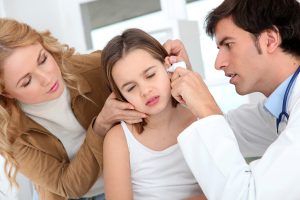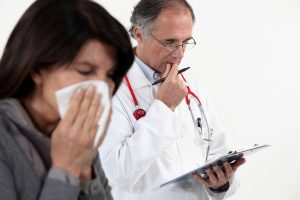Antibiotics and Yeast Infections
Taking antibiotics is one of the best ways to combat bacterial infections. This is why doctors prescribe antibiotics whenever their patients suffer from conditions like ear infections, strep throat, urinary tract infections (UTI), and many more. However, there are also certain instances where taking antibiotics may cause the body harm instead of helping it recover. One good example is the development of new infections, such as bacterial vaginosis or a yeast infection, also known as vaginal candidiasis.
How can antibiotics give you a yeast infection if they are prescribed to fight against bacteria?
Certain factors like microbiome imbalance could play a vital role in developing a yeast infection through antibiotics. This article discusses what a vaginal yeast infection is, how it affects the body, and how it can grow from taking antibiotics. Read on to learn more.
How Effective are Antibiotics?
Antibiotics are helpful for most bacterial infections, but many studies have shown their efficacy in treating vaginosis symptoms. Two specific types of antibiotics called clindamycin and metronidazole are believed to be the most common and efficient ways to treat vaginosis. A study on these two kinds of antibiotics has reported that 90% of women experienced no symptoms of vaginosis after using them.
A similar study on the effects of clindamycin on vaginosis also showed that 88% of patients did not exhibit vaginosis symptoms one to two weeks after receiving treatment. At the same time, 50% received no symptoms one to two weeks after receiving the placebo treatment. About half of the women in these studies experienced symptoms only a year after their first infection. Today, further studies and research are being conducted to reveal more about the effectiveness of antibiotics for vaginosis cases.
How Are Antibiotics Used?
Antibiotics target significant or severe bacterial infections that the body’s immune system cannot resolve. These infections often include whooping cough or UTI, which usually require prescribed medication to relieve symptoms. Antibiotics are effective in treating most bacterial infections but not all of them. Some viral infections like the common cold and sore throats aren’t meant to be treated by antibiotics.
The Three Forms of Antibiotics
Antibiotics come in three forms. The most common type of antibiotic is oral antibiotics. Oral antibiotics may come in pill or liquid form to treat minor infections. Topical antibiotics are usually infused in creams or lotions for skin infections. Lastly, antibiotics can be injected into the body if severe conditions have been found within the blood or the muscles. Antibiotics can harm the body if taken outside of a medical prescription, so consult a healthcare professional if you feel you need to take antibiotics.
Can Antibiotics Give You a Yeast Infection?
Many cases and studies have proven that antibiotics can cause vaginal candidiasis. However, the results of those studies have also shown that not all types of antibiotics can cause this infection.
Antibiotics that can Cause a Yeast Infection
Vaginal candidiasis can develop when you consume two types of antibiotics: tetracyclines and quinolones. Tetracycline is an antibiotic most commonly used to treat conditions like UTIs or sexually transmitted infections. Quinolones are also used to treat UTIs and cure bacterial prostatitis and pneumonia. These two types of antibiotics are most likely to cause vaginal candidiasis. However, broad-spectrum penicillin has also been cited as a leading cause in some cases. Using these antibiotics can result in an overgrowth of yeast, eventually leading to an infection.
Why Do You Get a Yeast Infection from Antibiotics?
The function of antibiotics is to eliminate harmful bacteria from the body. However, infections may develop from the instances where the antibiotics eliminate the good bacteria found in the vagina while treating another bacterial infection. For example, a bacteria called “lactobacillus” can be found in the vagina. This protects it from vaginosis by making the vagina more acidic. When the antibiotics disable the effects of the lactobacillus bacteria, the body experiences an imbalance or lack of good bacteria within the vagina. This causes the yeast to develop, which means you will likely get an infection after taking certain antibiotics.
Preventing a Yeast Infection from Antibiotics
Vaginal candidiasis can be annoying and uncomfortable, especially if you are recovering from an initial condition. Unfortunately, reports have shown that hospitals in the USA receive an annual estimated over 1.4 million outpatient visits from women because of vaginal candidiasis. Here’s how you can protect yourself from becoming a part of that number.
The best and most effective way to prevent vaginal candidiasis from developing after taking antibiotics is only to take antibiotics as prescribed to you by a doctor or healthcare professional. This is because taking antibiotics causes an imbalance of bacteria in the body, which will only be intensified and possibly cause harmful effects if you take them without a prescription.

7 Tips to Prevent Yeast Infection from Antibiotics
There are many ways to protect against vaginal candidiasis developing while taking antibiotics. For the best results, try to practice these simple habits while taking antibiotics to prevent a bacterial infection.
1. Avoid hot water and stick to cold or lukewarm water during baths. Yeast is more likely to grow when the body is subjected to increased heat.
2. Avoid tight clothing. Tight clothing can cause the body to feel warmer, encouraging yeast growth in the vagina. Try using comfortable and loose clothing instead.
3. Avoid feminine hygiene products. Although these products are advertised to protect against vaginal infections and other similar conditions, the level of acidic pH inside these products can cause an imbalance in the vagina’s bacterial count, which causes infection.
4. Do not use scented tampons. Like feminine products, these tampons also contain certain ingredients in the material that can disrupt the body’s natural bacterial count.
5. Wear condoms during sexual intercourse. It’s better to be safe during sex, as your partner’s penis or fingers may have traces of bacteria that could lead to vaginal yeast infection.
6. Only take antibiotics when prescribed.
7. Practice quality personal hygiene
Risk Factors for Developing Yeast Infections While on Antibiotics
Many factors can cause the development of vaginal candidiasis after taking antibiotics. In some cases, the initial condition can also cause an infection. In contrast, the risk of certain conditions is only enhanced once the antibiotics enter the body.
Here are some of the most common causes:
- Weak immune system – A more vulnerable immune system cannot protect the body from bacterial infections like a vaginal yeast infection. This can be caused by other medication or treatment practices, like chemotherapy.
- Pregnancy – Pregnant women are more prone to vaginal yeast infections due to the changes in their hormones during pregnancy. This causes an increased vaginal discharge.
- Diabetes – Higher blood sugar levels can be a root cause of vaginal yeast infections.
- Sexual intercourse – Sexual intercourse requires a lot of bodily contact while allowing bacteria to be passed on from one sexual organ to another during the process. This can cause vaginal candidiasis to develop.
How to Treat Yeast Infections Caused by Antibiotics
According to the Centers for Disease Control and Prevention (CDC), HHS, it can be challenging to combat the treatment-resistant strain of yeast. This type of yeast has grown resistant to most treatments. It will stubbornly linger within the body, despite being subjected to several treatments. However, other studies have also presented possible options for treatment.
Using Probiotics
The results of a study on the effects of probiotics for treating bacterial vaginosis in adult women: a meta-analysis of randomized clinical trials have shown that probiotics can be used in yeast infection treatment. Probiotics have good bacteria, often used to prevent an overgrowth of unhealthy bacteria in the body. By using these probiotics, the body is exposed to a predominant group of bacteria that can be used to treat the stubborn effects of the infection. In addition, these probiotics produce antimicrobial substances that help cleanse the body of the effects of an infection. This helps resolve the bacterial imbalance initially caused by taking antibiotics.
Frequently Asked Questions
As mentioned previously, broad-spectrum penicillin is one of the antibiotics that can cause vaginal candidiasis. Penicillin most commonly comes in the form of amoxicillin and augmentin, which are used to treat diseases like bronchitis, pneumonia, and skin infections. However, taking this antibiotic can cause a bacterial imbalance, leading to infection.
Plan B pills contain estrogen and progesterone. Once you take these pills, the natural level of these two hormones is increased, which causes a hormonal imbalance to occur. Like a bacterial imbalance, experiencing a hormonal imbalance is also one of the leading causes of vaginal candidiasis. The same preventive measures apply when treating the infection while taking plan B pills or contraceptives. Try to stay away from heat and make sure to wear a condom during sex.
You must first consult with a doctor before taking or using any form of medication to combat the infection. The effects of drugs on your body may vary depending on why you were initially using the antibiotics. In addition, combining different over-the-counter medications may cause other side effects. The best treatment option, in this case, would be to use probiotics to replenish the good bacteria inside your body.
Ciprofloxacin, also known as Cipro, is used to treat bacterial infections. However, it is not recommended for treating yeast infections. Cipro is most suitable for urine infections and chest infections. Using Cipro to treat vaginal candidiasis would not provide the best results. Instead, you may use probiotics for a strong dose of good bacteria or consult your doctor about a prescription that could help treat your condition. Vaginal candidiasis is best treated by antibiotics like metronidazole or clindamycin.
It depends on the patient’s body, as all bodies react differently to medication. However, the average time for vaginal candidiasis to fade would be around three to seven days after using the antibiotics or other prescribed treatment options. During this timeframe, the symptoms of the infection should begin to feel less harsh and intense until they are completely gone.
You must first consult your doctor before making any decisions. For example, you were initially prescribed antibiotics to treat a different infection. Ceasing these antibiotics before the designated time frame might result in the bacterial infection being worsened or prolonged. Therefore, contact your doctor immediately when you see the initial symptoms while taking antibiotics. They will most likely prescribe you the appropriate treatment options that go well with your situation.
You can tell by monitoring the symptoms you are experiencing. For example, you can tell that your antibiotics have given you vaginal candidiasis if you experience itchiness or soreness in the vaginal area, thick and clumpy discharge, or an unpleasant odor from the vagina. There are only three types of antibiotics that can cause this infection. If you were taking penicillin, quinolones, and tetracycline, they are most likely the reason for your condition.
Conclusion
Vaginal candidiasis may be challenging to deal with, especially if you are already battling the symptoms of an initial condition. When you begin seeing signs of developing an infection, do not take any additional medication or stop taking your current antibiotics. Before making any decisions, contact your doctor or a healthcare professional for advice.
http://rd.springer.com/article/10.1007%2Fs00404-013-3117-0
http://www.acog.org/~/media/For%20Patients/faq028.pdf?dmc=1&ts=20120924T1249146853
https://www.cdc.gov/fungal/antifungal-resistance.html
http://www.mayoclinic.org/diseases-conditions/yeast-infection/basics/causes/con-20035129
https://www.cdc.gov/fungal/diseases/candidiasis/genital/index.html
https://www.sciencedirect.com/science/article/pii/S1471489221001442?via%3Dihub
https://www.ncbi.nlm.nih.gov/pmc/articles/PMC7023241/
http://www.uptodate.com/contents/vaginal-yeast-infection-beyond-the-basics





